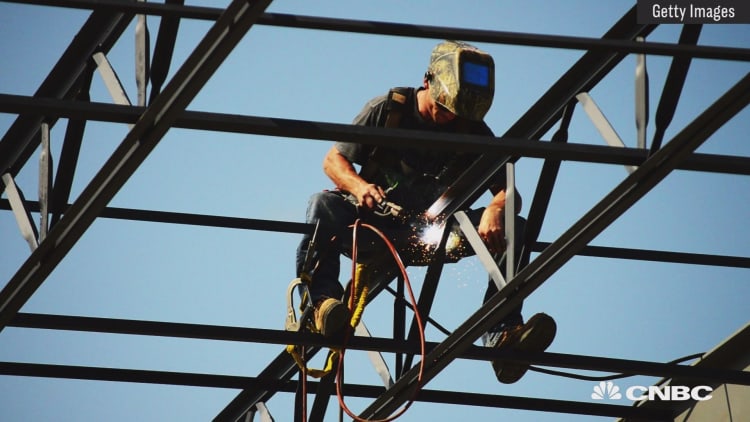United States tariffs are beginning to take their toll on farmers and the storage, shipping and freight operations they need to move their crops to market.
In North Dakota, soybeans from 2017 are still in storage after China pulled its contracts. Of the 15.9 million bushels left from that year's crop, 12.1 million bushels are sitting in grain elevators. That is an increase of 68 percent.
"There aren't any shipping contracts to move them out of those facilities and get them to ports in the Pacific Northwest for export, either," said Simon Wilson, executive director of the North Dakota Trade Office.
With this year's crop now being harvested, the lack of available storage means some soybeans may have to be stored on the ground in bags, a challenge for this temperamental crop. According to the North Dakota Soybean Growers Association, farmers in the state contracted to sell an estimated 40 percent of the 2018 crop.
"Storage is an issue," said Tim McGreevy, CEO of the USA Dry Pea and Lentil Council. "Even some of the mothballed country elevators have been called back into service. Farmers are building more storage or putting their crop in a plastic bag on the ground."
Wilson said, "Ironically, because of the Trump tariffs and China's demand for Brazilian soybeans, eight new export elevators are being built."
In Wisconsin, Chippewa Valley Bean, a kidney bean processor and supplier, slashed prices on its remaining beans from the 2017 harvest to move them out. Cindy Brown, the company's president, told CNBC the company is taking a financial hit but had to do it.
"We are playing catch up on moving product and bursting at the seams," Brown said. "We had to do something. We not only need the room but also needed to pay our growers on contracts we made with them in 2017."
The agriculture sector isn't the only industry facing storage issues. The maritime industry is facing its own space squeeze. Los Angeles, the nation's busiest container port, and other U.S. ports have less than 1 percent of warehouse vacancy available. Some of the pressure is coming from a rush to import goods ahead of the tariffs being implemented.
"We have more than 1.8 billion square feet of warehouse and distribution facility space near the port complex, more than anywhere else in North America," said Port of Los Angeles Executive Director Gene Seroka. "It's an extremely tight market now, and one factor is that orders for goods have been advanced ahead of tariffs."
Capacity at the Port of Long Beach's warehousing/distribution center is considered "full" by port officials with around 85 percent capacity filled. Experts say once distribution centers get above 85 percent, their efficiency starts diminishing quickly. Space at the Long Beach terminal is also shrinking. According to operators, the terminals are at about 75 percent to 80 percent capacity.
"What you're seeing are the effects of tariffs imposed by Washington and Beijing," said Mario Cordero, executive director of the Port of Long Beach. "Empty containers are not being cycled back to China to be refilled with goods, and a lot of inventory came early to get ahead of the duties and is now sitting in warehouses."
Cordero said this hasn't affected the operations, yet. "We're having a record year and our terminals are still able to manage their capacity for the volumes they're handling."
Since the Trump administration's announcement of the tariffs, importers rushed to bring in product before the deadlines. Total freight shipments have increased 6.5 percent this year and container moves have grown an average of 5.9 percent a month, according to the Intermodal Association of North America.
Retailers imported so much product that June and July, which are historically considered "slack" months for trade volume, became the new peak season according to data on importing and exporting from the Port Import/Export Reporting Service. July replaced August as the peak month.
Experts say another surge of imports is expected in October for the holiday shopping season as well as before Jan. 1 and the Chinese New Year because of the threat of additional U.S. tariffs. The load of imports could be even larger creating additional stress on freight and shipping patterns.
WATCH: Trump's tariffs could lead to unintended consequences



